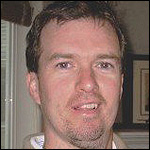WEB EXCLUSIVE: Excited Yet?
With less than two years to go before the U.S. Open comes to Chambers Bay, preparations are in full swing
by Tony Dear

The name isn’t official yet, but “Chambers Basement” is slowly gaining traction.
Visitors to the course that will host the 2015 U.S. Open give it a wide berth, but most can’t help throwing a ball in to see if they can get out.
Though the decision to build it followed discussions with several parties, it was, essentially, USGA Executive Director Mike Davis’ idea.
Depending on where you’re measuring from, and who you’re talking with, its walls range from about eight to 15 feet. It has become the most talked about quirk of a course preparing for global exposure.
We are talking, of course, about the extravagantly deep bunker 120 yards short of the 18th green that has been in play since the beginning of 2012.
Matt Allen, Chambers Bay’s General Manager, insists the feedback has been positive. “The response has been favorable,” he says. “It has become a bit of a novelty, with golfers stopping for a picture (or playing) opportunity from inside it.”
Hazards like this aren’t built without some controversy, however, and it was the course architect himself who first raised concern.
Robert Trent Jones, Jr., the man whose impressive credentials helped him beat out 55 competitors to land the job of designing the course overlooking Puget Sound, had no problem putting a fairway bunker there to give players laying up something to think about. He’s just not convinced it needed to be quite so deep.
“It goes halfway to China,” he laments. “I had no problem with Mike’s notion of putting it there, but it is perhaps too penal for my liking.”

Jones also thinks it looks a little out of place. The majority of hazards at Chambers Bay are exposed, sandy waste areas, whereas the pit at 18 is a more traditional-looking bunker, albeit considerably deeper than most. “It doesn’t have quite the same character as the other bunkers,” says Jones.
But, he notes, it will add a welcome psychological challenge to an otherwise straightforward shot, forcing players who miss the fairway to think about where they can safely lay up short of the green when the hole is playing as a par-5.
“I like that they will have to make a very important decision so late in the round,” he says, adding it won’t be a good shot that avoids the bunker but a poor one that finds it.
The addition of the bunker on the 18th hole is one of several changes that have occurred at Chambers Bay since the 2010 U.S. Amateur Championship, an event that gave Mike Davis a pretty good idea of what worked and what needed to change prior to the ’15 Open.
Jones is quick to point out, however, that what happened to the course weren’t changes actually, but refinements. Every golf course – except classic period venues like Cypress Point, Pine Valley and Old Warson in St. Louis which should perhaps be left alone – is a work in progress, he says. But it must first be constructed on sound foundations if you want to amend parts of it efficiently and seamlessly.
“Golf is a high state of art,” he says. “But this art is in use every day. It needs to be able to adapt to changes in the game. But in order for that to be possible, the skeleton must be strong. You walk into Monet’s garden and the overall effect is beautiful, but it’s made up of the individual lilies. Capability Brown made such wonderful landscapes, but he obviously worked with a set of solid principles. At Chambers Bay we knew refinements would need to be made at some point.”
The other changes (sorry, refinements) which cost the USGA and Pierce County $1.4 million to make included leveling the fairway short of the first green to allow balls approaching the flag along the ground to remain online rather than be swept down onto the adjoining fairway; expanding the green at the seventh while leveling the ground on the approach to prevent shots coming up a little short rolling 150 yards back down the fairway; leveling the fairway short of the eighth green to stop well-struck shots from falling down the hill on the right; building a new tee for the ninth hole at the bottom of the hill to the right of the eighth fairway; widening the fairway and expanding the green at the 13th and making it a long par-4 rather than a short par-5; and expanding the waste bunker to the right of the 18th hole into the fairway.
Jones worked alongside David Wienecke, the course’s former superintendent who was replaced by Eric Johnson from Bandon Dunes in July 2012 (Johnson was actually made Director of Agronomy while Josh Lewis, also formerly of Bandon Dunes, became superintendent), Larry Gilhuly, Northwest Director of the USGA’s Green Section, and master shaper Ed Taano who has been with Jones’ firm for over 30 years.
Most of all, though, Jones collaborated with Mike Davis, whom he calls a genius.
“It was so enjoyable playing outdoor chess with him, discussing how we were not only going to challenge the best players in the world physically but also mentally,” he says.

Now, with the design of the course updated, attention has turned to the quality of the playing surfaces and tournament logistics, with Eric Johnson responsible for the grass, and Danny Sink, the USGA’s onsite Championship Director, in charge of security, catering, transport, parking, marketing, sales (tickets and corporate boxes) and everything else in between.
Johnson’s main task since his arrival a year ago has been to ensure turfgrass coverage on the greens which seemed to be taking forever to attain the smoothness and speed required of a U.S. Open venue.
“We have made great strides in that direction,” he says. “We are working on it daily and look to get closer to full coverage this fall. Of course a variety of factors can influence recovery time but we will use all available tools in the effort to achieve our goal.”
Johnson says he and his team are spiking and spot-seeding the greens every week, and following up with spot applications of fertilizer (weekly or as needed) and daily irrigation. “There are some areas where we will use sod to achieve coverage. These areas will receive the same follow up treatment until they grow in.”
At the recent WSGA Men’s Amateur Championship, the players were almost unanimous in their praise for the condition of the putting surfaces and the course as a whole.
“They are still a little inconsistent and there are spots of Poa annua, but generally the greens had much better coverage than they did in 2008 when I last played there,” says Bellingham’s Matt Rawitzer, who finished tied for sixth. “We couldn’t really run the ball in to the flags because the greens were so hard and the fairways quite soft, but really the course was in much better shape.”
Sink, meanwhile, is confident plans are on schedule and that everything is where it should be 700 or so days out. “Preparations have gone very smoothly up to this point,” he says. “We will continue to focus on our parking and transportation plans, and the development of our overall public safety program because these matters are constantly evolving. But so far everything has gone as we’d hoped.”
Sink is especially pleased with the involvement of the local and regional corporate communities. “As expected, businesses are stepping up to support the 2015 U.S. Open Championship,” he says. “We opened our corporate hospitality sales program on June 23rd, and the response thus far has been very encouraging.”
Sink says there is already a palpable level of excitement about the event. “People will be talking about this Open for generations to come,” he adds. “And the fact it has never been to the Pacific Northwest just adds to the sense of anticipation.”
Does it ever.
A former British PGA apprentice professional and member of the University of Liverpool golf team, Tony Dear is an award-winning golf writer. He contributes to numerous golf publications on both sides of the Atlantic, and has authored several books on golf. He manages his own website, bellinghamgolfer.com.






